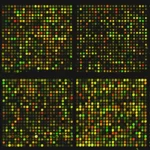
Transitioning from a Pure Biology PhD to Bioinformatics : A Practical Guide
February 27, 2024Are you a PhD student in Biology with a growing interest in bioinformatics? Are you wondering if it’s possible to make a transition to these fields without starting from scratch? The good news is, it’s definitely possible! In this blog post, we’ll discuss some practical steps you can take to make this transition smoother and more successful.
Assess Your Current Skills and Interests
Assessing your current skills and interests is an important first step before delving into the fields of bioinformatics or biostatistics. Here’s a detailed breakdown of what this assessment might involve:
- Background in Math or Computer Science: Both bioinformatics and biostatistics rely heavily on mathematical and computational concepts. Having a strong foundation in math (especially statistics) can be beneficial. Similarly, a background in computer science or programming can provide a solid framework for learning bioinformatics or biostatistics.
- Exposure to Programming Languages: Familiarity with programming languages like Python or R is highly advantageous. These languages are commonly used in bioinformatics and biostatistics for data analysis, visualization, and algorithm development. If you haven’t used these languages before, consider taking introductory courses or tutorials to get started.
- Understanding of Biological Concepts: While not always necessary, having a basic understanding of biological concepts can be helpful, especially in bioinformatics. This includes knowledge of genetics, molecular biology, and biochemistry. If you’re new to these topics, consider taking introductory biology courses or reading up on these subjects to familiarize yourself.
- Skills Assessment: Evaluate your current skills in math, programming, and biology. Identify areas where you feel confident and areas where you may need to improve. This will help you prioritize what to focus on during your transition into bioinformatics or biostatistics.
- Interest Alignment: Consider how your interests align with the fields of bioinformatics or biostatistics. Are you passionate about using data to solve biological problems? Do you enjoy working with large datasets or developing algorithms? Understanding your interests can guide you in choosing the right path within these fields.
- Learning Plan: Based on your assessment, create a learning plan that addresses your weaknesses and builds on your strengths. This might include taking online courses, attending workshops or seminars, or working on practical projects to gain hands-on experience.
Overall, assessing your current skills and interests is crucial for a successful transition into bioinformatics or biostatistics. By understanding where you stand and what you need to improve, you can tailor your learning journey to suit your needs and goals.
Identify Relevant Research Areas
Identifying relevant research areas in bioinformatics and biostatistics that align with your current work in biology can help make your transition smoother. Here are some steps to help you identify these areas:
- Review Current Literature: Start by reviewing recent literature in your field of biology. Look for studies that incorporate bioinformatics or biostatistics to address research questions or analyze data. Pay attention to the methods and approaches used in these studies.
- Attend Conferences and Workshops: Participate in conferences, workshops, and seminars related to bioinformatics and biostatistics. This can help you learn about the latest research trends and connect with experts in the field.
- Talk to Colleagues and Mentors: Discuss your interest in bioinformatics or biostatistics with colleagues and mentors. They may be able to provide insights or suggest research areas that are relevant to your current work.
- Identify Common Challenges: Identify common challenges or problems in your field of biology that could benefit from a bioinformatics or biostatistics approach. For example, if you work in genomics, you may be interested in studying methods for analyzing and interpreting genomic data.
- Consider Interdisciplinary Approaches: Think about how bioinformatics or biostatistics can complement your current work. Consider interdisciplinary approaches that combine biology with computational and statistical methods.
- Explore Data-Driven Approaches: Look for opportunities to incorporate data-driven approaches into your research. This could involve analyzing large datasets, developing predictive models, or using machine learning algorithms to extract insights from data.
By identifying relevant research areas that align with your current work in biology, you can focus your efforts on transitioning into bioinformatics or biostatistics in a way that builds on your existing expertise and interests.
Educate Yourself
Educating yourself about the tools and techniques used in bioinformatics or biostatistics is crucial for a successful transition. Here are some steps to help you get started:
- Read Research Papers: Start by reading research papers in your chosen research area. Pay attention to the methods and techniques used in these studies, and try to understand how they contribute to the field.
- Attend Workshops or Webinars: Attend workshops, webinars, and seminars related to bioinformatics or biostatistics. These events can provide valuable insights into the latest tools and techniques being used in the field.
- Take Online Courses: Enroll in online courses or tutorials to learn specific skills and techniques in bioinformatics or biostatistics. Platforms like Coursera, edX, and Khan Academy offer a wide range of courses in these areas.
- Reach Out to Experts: Connect with experts in the field of bioinformatics or biostatistics for advice and guidance. They can provide valuable insights into the skills and knowledge needed to succeed in the field.
- Practice with Datasets: Practice analyzing datasets using bioinformatics or biostatistics tools and techniques. This will help you gain hands-on experience and improve your skills.
- Stay Updated: Stay updated with the latest research and developments in bioinformatics and biostatistics by subscribing to journals, attending conferences, and following relevant blogs and forums.
By taking these steps to educate yourself about bioinformatics or biostatistics, you’ll be better prepared to make a successful transition into the field.
Collaborate with Experts
Collaborating with experts in bioinformatics or biostatistics can provide valuable learning opportunities and help you establish yourself in the field. Here are some steps to help you collaborate with experts:
- Identify Potential Collaborators: Identify researchers or professors who are working on projects that align with your interests in bioinformatics or biostatistics. Look for experts who have a strong track record of publications and research in the field.
- Reach Out: Reach out to potential collaborators via email or through professional networking platforms. Introduce yourself, explain your background and interests, and express your interest in collaborating with them.
- Propose a Collaboration: Propose a specific collaboration idea or project that you could work on together. Highlight how your skills and expertise could complement their research and contribute to the project.
- Discuss Expectations: Once you’ve established contact with a potential collaborator, discuss expectations, timelines, and goals for the collaboration. Be clear about what you hope to achieve and what you can contribute to the project.
- Stay Engaged: Stay engaged and proactive throughout the collaboration. Attend meetings, contribute ideas, and be willing to learn from your collaborators.
- Publish and Present: If the collaboration leads to a research project, work towards publishing your findings in a peer-reviewed journal and presenting them at conferences. This can help establish your credibility in the field.
By collaborating with experts in bioinformatics or biostatistics, you can gain valuable experience, learn new skills, and build a network of contacts that can help advance your career in the field.
Consider a Post-Doc Position
Considering a post-doc position is a great way to gain deeper expertise in bioinformatics or biostatistics. Here are some steps to consider:
- Identify Labs: Look for labs or research groups that specialize in bioinformatics or biostatistics and align with your research interests. Check their recent publications and ongoing projects to see if there are opportunities for collaboration.
- Reach Out: Contact the principal investigator (PI) or lab head expressing your interest in their work and inquire about potential post-doc positions. Provide a brief overview of your background and research interests.
- Prepare Application Materials: Update your CV and prepare a cover letter outlining your research experience, skills, and why you’re interested in the position. Tailor your application to highlight your relevant skills and how they align with the lab’s research.
- Networking: Attend conferences, seminars, and workshops related to bioinformatics or biostatistics to network with researchers in the field. This can help you learn about potential post-doc opportunities and make connections.
- Apply: Submit your application to the labs you’re interested in, following their specific application guidelines. Be prepared for interviews and be ready to discuss your research experience and future goals.
- Consider Funding Opportunities: Look for funding opportunities for post-doc positions in bioinformatics or biostatistics. Many institutions and organizations offer post-doc fellowships specifically for researchers transitioning into new fields.
Overall, a post-doc position can provide valuable experience and help you establish yourself in the field of bioinformatics or biostatistics.
Be Prepared for Challenges
Transitioning to a new field, such as bioinformatics or biostatistics, can indeed be challenging but also highly rewarding. Here are some common challenges you may encounter and tips for overcoming them:
- Learning Curve: You may find yourself faced with a steep learning curve as you familiarize yourself with new concepts, tools, and techniques. Take your time to understand the fundamentals and don’t hesitate to seek help from experts or online resources.
- Technical Skills: Developing proficiency in programming languages and software used in bioinformatics or biostatistics can be challenging, especially if you have limited prior experience. Practice regularly and consider taking online courses or workshops to improve your skills.
- Interdisciplinary Nature: Bioinformatics and biostatistics are interdisciplinary fields that require knowledge of biology, mathematics, and computer science. Be prepared to integrate these different disciplines and approach problems from multiple angles.
- Networking: Building a network of colleagues and mentors in the field can be challenging, especially if you’re new to the field. Attend conferences, seminars, and workshops to meet other researchers and establish professional connections.
- Job Market Competition: The job market for bioinformatics and biostatistics can be competitive. Focus on developing a unique skill set and showcasing your expertise through research projects, publications, and collaborations.
- Work-Life Balance: As you immerse yourself in learning and research, maintaining a healthy work-life balance can be challenging. Set realistic goals, prioritize your tasks, and don’t forget to take breaks and recharge.
Remember, it’s normal to face challenges when transitioning to a new field, but with perseverance and dedication, you can overcome them and succeed in bioinformatics or biostatistics.
Conclusion
Transitioning from a pure biology PhD to bioinformatics or biostatistics is definitely possible, but it requires careful planning and dedication. By assessing your current skills, identifying relevant research areas, educating yourself, collaborating with experts, and being prepared for challenges, you can make a successful transition to a new and exciting field.

















